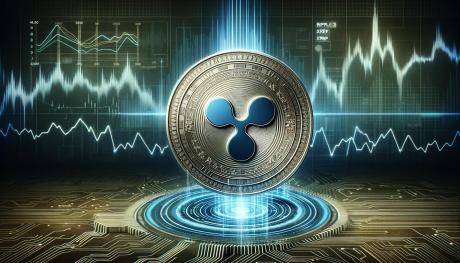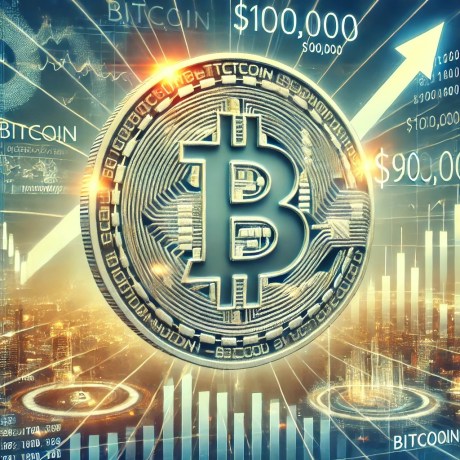2019 is a very tough year for public chains. Many excellent teams are good in both their original intentions and their own technologies, but still fail to survive in the end. One of the fatal reasons that many public chains lost the game is the fact that they didn’t make the effective application scenarios and business model. In this very hash year, WaykiChain carved out its way with its unique creative model and set up an extraordinary example for the other tripped beasts on how to break the ice.
At the brand new 2020, a conversation has been driven with Gordon Gao, WaykiChain CEO to take a look on his insightful view and ideas towards the industry and the development of WaykiChain.
Gordon Gao, WaykiChain Co-Founder & CEO, an Alumni of Columbia University in New York, former Chief Data Scientist of Fishbowl in Wall Street, ex-Senior Data Analyst of Alibaba Group, senior member of Mensa International Club, currently serves as WaykiChain CEO. He is responsible for offering support to WaykiChain commercial model designing and strategy planning, building up a digitalized monitor system for products and operation and promoting WaykiChain overseas market with his international background.
2020 is coming. Remember at the beginning of 2019, someone said that 2019 would be the hardest year in the past decade, but also the best year of the next decade. How do you see the economic environment in 2020? What do people need to pay attention to?
Gordon: Judging from the trend of China’s Internet industry, it has been stuck in the stage of stagnant growth and seeking for the transformation. The growth rate of Internet monthly activity this year is only about 1.3%, which is nearly nothing. Baidu started the year with a loss in Q1, Weibo stock price dropped, tencent’s revenue growth slowed down, and no new hot App appeared in 2019. At the same time in the capital market, people are more realistic, they tend to focus on profit, cash flow and so on. Things have changed that it is no longer like anything could bring out a great result when you just got an amazing idea.Even if Wework were this big, with softbank in the mix, the lack of a sustainable profit model has stymied its IPO. So my advice to entrepreneurs is to do more value and less story. However, such an economic environment is also an opportunity for investors, because there are a large number of high-quality enterprises and assets in the state of undervaluation, so they can look at the opportunity to lay out some risky assets.
The development of public chain and alliance chain is an important topic in the industry. Some point of view, alliance chain projects do not have their community to share the cost of development including application development, which is all on theirown, so the development of alliance chain is more difficult, but at least it is paid by the enterprise, so it can survive. However, although there is community cost sharing for the publich chain, on the one hand, it needs to ensure that the price of the certificate can be effectively stimulated; on the other hand, it lacks a systematic demand scenario to promote the technology development, so the development will be more difficult. What do you think of this phenomenon? How should blockchain technology teams currently choose their own business path?
Gordon: In my opinion, it is only in China that the public chain and alliance chain are often compared by people. Because Chinese government has not been particularly open about cryptocurrency. It sounds like there are enterprises paying for the alliance chain, but now most of the companies that do alliance chain are big companies with good money, such as Tencent, Ant financial, Baidu and so on. These companies are also burning money to build blockchain. If the blockchain department is set up independently to set up a company, the value generated by the company is far from enough to cover its costs. Therefore, alliance chain is an unproven and effective business model just like the public chain.The current problem of corporate chain is also a problem of business model. Most of the corporate chain has no business model. At the beginning of the design of corporate chain, the concept of currency is to refer to BTC and ethereum as the basic fuel to maintain the operation of the whole network.However, due to the limited commercial application scenarios, the demand as fuel is far from supporting the high market value of the chain.At the same time, the construction of the public chain is a very large and complex project, which requires high capital, involving many aspects such as the design of the general certification model, the selection of technical direction, the development and realization, the ecological construction, business breakthrough, community consensus and so on. This creates a contradiction. Personally, I do not recommend that technical teams with financing scale of less than 100 million get involved in the public chain field. Instead, they can build ecosystem around the public chain, such as De-fi field.
As far as I am concerned, the development of the public chain has not improved in 2019. On the one hand, the public chain has not formed a landing application scenario with rigid demand; on the other hand, the public chain has not formed an effective business model. What do you think of the current dilemma in the development of the public chain?From what aspects should we break through the development of the chain? What is the breakthrough of WaykiChain in these two aspects?
Gordon: in 2018, some public chains died because of bankrupt. In 2019, some public chains died because of hopeless. I think there’s a very good word in the question, the industry has been exploring rigid demand for the last few years. A lot of business models, they look good at first, but they don’t probably meet the rigid requirements at this stage .Such as “blockchain + game” this circuit. Even NetEase, a big company with money, users and resources, got involved in blockchain + games and was ultimately proved to be a failure. In fact, assets like NetEase with big capital assets and users, which you think can be traded across games and platforms, may not be exactly what players need at this stage. WaykiChain also tried DApp ecosystem in 2019, but later it was found that the blockchain did not generate enough value for users in the process, so in the end, the developers of the game could not earn the money from the DApp games, they could only earn subsidies from the project side, and some even ran away.After a period of exploration, at the current stage, users who know about blockchain are basically financial related.The two things we found were borrowing money and making money.So we’re going to make breakthroughs in both directions.This is why we want to make a mortgage lending system through stablecoin, which can be used to mortgage WICC or cross-chain mortgage for BTC and ETH to generate WUSD. This is the lending system. Then, the compliant cross-border financial scenarios such as Huatong securities laid out by us are those in which digital currency is used to solve the issue of gold and money to help users make money. For another example, currently the interest rate of mortgage lending is generally above 10 points, but the average deposit rate in Europe is between 0 and 0.3%. There is a great opportunity to use digital currency to build bridges, and use blockchain rules to build trust, so as to make the global efficient circulation of value.
In my opinion, stablecoin WUSD is a very delicate design, but the three-currency model is also a little complicated for users to understand. Can you introduce WUSD with the simplest words? In addition, WUSD is benchmarked against DAI. What do you think is its competitiveness?Especially since DAI is based on ethereum’s business, how does WaykiChain stack up to ETH? DAI’s business model is mainly based on adjusting rates. What is WUSD’s business model?
Gordon: WUSD is a stablecoin that anchors US dollar, and each issue of WUSD is backed by more than one dollar of digital assets. Advantages compared with DAI: 1. Faster transfer: 3 seconds to accounts; 2. The mechanism is more advanced, with the introduction of risk reserve fund and decentralized pricing mechanism to improve the risk resistance.3. The technology is more advanced. WUSD is developed at the bottom of the chain to reduce the coupling between contracts and reduce the risk of being attacked. 4. It is more convenient, WUSD supports out-of-pocket service charge, and there is no need for other currencies to be used as GAS in the transfer. An accurate measure of a stablecoin like WUSD is its circulation, because the higher the circulation, the more the stabilization fee and liquidation penalty of the system revenue.Stable fee will go to the DEX on the destruction of governance coin WGRT destruction.Then if you want to make a large circulation, you need to do two parts at the same time. One part is the supply side, which constantly pushes the users of BTC, ETH and WICC to generate WUSD. These users may want to increase leverage, may want to borrow cash, and may want to use WUSD in other scenarios.The other part is the demand side, continuously expanding the application scenarios of WUSD, such as cross-border finance such as Huatong securities, or interest collection for deposit in some low-interest countries, to expand the market demand of WUSD. Supply and demand are connected to each other, WUSD circulation will increase, and the whole system will be profitable.
How does WUSD acceptance guarantee that the Exchange is always valid? Will there be no market situation? In addition, many stablecoins are constrained by the fact that they can be used by arbitrageurs in the secondary market. Does WUSD encounter such problems?Finally, how to maintain the stability of market value?
Gordon: the question I understand is what is the guarantee for the Exchange value behind WUSD? Will there be value collapse or no market value? The answer is no. Let’s say I’m the only one in the whole system who generates 100 WUSD through collateral and then sells it to you for $100. Because the assets that are over-collateralized must be worth more than $100, like $200 worth of BTC. I can redeem my $200 asset for only 100WUSD plus some stable fee, so I will always keep the motivation to purchase WUSD in the market to redeem the asset, that is to say, the 100WUSD in the hands of you will always be valuable and always be in demand, so it can be regarded as the Exchange you said will always be valid.
There are two main types of stablecoin arbitrage scenarios that I can think of. One is that the secondary market uses price differentials for value arbitrage.This kind of arbitrage scenario is inevitable. I think this kind of arbitrage will better promote the price discovery of stablecoin and promote the development of stablecoin in disguise.The second is spread arbitrage, where interest rates are higher on some platforms than on others. At present, we haven’t officially introduced the interest model of deposit money like DAI, so the whole system only has the interest of loan, it is impossible to collect the bounties.Generally speaking, if you are not a bounty hunter, you are not afraid of being pulled up with the bounties.
Currently, De-fi based on Ethereum is the mainstream business, but in fact, De-fi business does not have a large market scale. Is this business area very optimistic?Moreover, the growth rate of Ethereum this year is obviously lower than that of BTC. The overall market performance of public chain is relatively weak. What do you think makes the most sense for De-fi’s business? What kind of growth space will there be in the future?
Gordon: De-fi now whole lock up funds at the end of 2019 around is around $690 million, a 137% increase over the $2.9 in early of the year, and continued to grow, so I think that the size of the market is considerable, and De-fi now is just on the ETH development, actually like a cosmos, WaykiChain is in the development of their own De-fi ecological chain, so the market scale will continue to increase. The potential of the market has not been fully tapped, for example, many small currencies and BTC have not been fully substituted into the De-fi system. The De-fi business is still limited in terms of lockup volume compared to Ethereum’s overall market cap. At present, ETH locked into De-fi system is less than 4% of the total market value of ETH, and such lock volume has no material impact on market value. But look at the MKR governance coin, compared to ETH, from 0.85ETH at the beginning of 18 years to 3.47ETH now, it has nearly quadrupled. Maker Dai is like WaykiChain WGRT, is a token with a clear business model. This value-based token is more resilient and less vulnerable to financial cycles than other currencies.
De-fi: I think the biggest significance is to improve financial efficiency and reduce cost. This cost includes information discovery cost, transfer cost, settlement cost and so on. We need to find the deterministic trend in the world, which must be the most efficient and the least costly. For example, the current cross-border Exchange settlement is very slow, often a few days, then this is not the final shape of the world. Nor is it the end of finance that cheap money cannot find or invest in good deals. De-fi can accelerate the world to what it should eventually be. The future of De-fi can be traced back to the evolution of the financial industry over the centuries. For example, today’s loans and deposits generate interest much like commercial bank deposits and loans. Decentralized Exchanges can trade assets and create derivatives based on them, such as futures and options. Finally, it integrates with traditional centralized assets to form a trustworthy financial ecosystem.
This year, Binance, CoinEx and other Exchanges used Cosmos to launch their own decentralized Exchange business. What is the success of WaykiChain in launching decentralized Exchanges? How are they going to compete with other players who have also opened decentralized Exchanges? Also, how has WaykiChain evolved across chains? Can you achieve the effect of Cosmos?
Gordon: decentralization is still not a strategic priority at this stage. The layout of the decentralized Exchange is just a building of the infrastructure on the chain, mainly to provide trading scenarios for various assets on WaykiChain, as well as a systematic listing environment for the stablecoin system. The cross-chain of WaykiChain is different from Cosmos, we are mainly heterogeneous cross-chain, not a homogeneous cross-chain like Cosmos. Our goal in doing cross-chain is not to complete the technology, but to introduce more assets into the De-fi system on WaykiChain, such as users can pledge BTC and ETH to generate WUSD after the cross-chain is completed.
WaykiChain TPS can peak at 7800 TPS, but many chains also claim that they have high TPS. This year, some chains have shown me that they are as friendly to developers as they can be. Many teams have developed many application molds, which make people feel like they can carry bags and check in anytime they want.
In terms of technology development, besides high TPS, what other good achievements of WaykiChain? What’s the good news for developers?
Gordon: I want to make it clear that our TPS was really tested on the main network. We built nodes to test more than 20 main networks and measured our mean TPS of 3300 and peak TPS of 7800. It was not just a claim or something. In the main net that we tested, the result was that we are the number one, and we also wanted to have the outside chain to come over and test. We have made a lot of efforts this year around the convenience of the development of the public chain, so we have also gained more than 20 DApps.
The various development language signature libraries on the public chain, web plugins and mobile wallets, BaaS platforms, Smart Contract compilation tools, test currency faucets, multilingual development documents, and much more have been done around the ease of developer development of WaykiChain. At the same time, in the next public chain version, we will soon launch the WASM virtual machine, which greatly improves the performance of the virtual machine and makes it developer-friendly. Porting virtual machine is a project with high technical difficulty. We learned that several projects ranked among the top 30 in market value are also developing WASM virtual machine. It took us several months to complete the porting of WASM, which fully demonstrates our technical strength.
EOS, with 21 nodes, has been criticized for not being a public chain, but WaykiChain, with 11 nodes, is it showing to be not so decentralized? Is too few nodes bad for the construction of community and ecosystem? What are the current work and future plans of WaykiChain in terms of community and ecosystem as a whole?
Gordon: This has been criticized from the beginning. We believe that decentralization goes through stages. Now that the blockchain market is well known, a completely decentralized cold start like BTC is unrealistic. In the early stage of a chain, its development needs must be greater than the governance needs, at which point the benefits of fewer nodes are shown, such as the constant upgrading of the technical architecture and economic model of the chain is very convenient. But we are also aware of the risks that 11 nodes can pose, such as the risk of devil nodes if enough De-fi collateral is on the chain. So we’re already planning to expand the number of nodes, and even if PoS validates on Ethernet, we might switch to PoS. Now, we don’t want to get too far away from the ecosystem, so let’s get the De-fi and stablecoin scenario right. It’s not 2014,2015. It’s too difficult to start with ecosystem and platform, and the uncertainty is very high. As for the community, we need to expand the overseas community vigorously. We have made some achievements and explored some ways and strategies. We plan to make efforts in 2020.
BTC halving will be a major industry focus this year. What do you think is the impact of BTC halving on the market? How will halving prices affect WaykiChain business? How should practitioners respond?
Gordon: as a coin trader, you may look at the half price, but as a team member of public chain, we won’t care too much about this, after all, halving itself is less related to our own business. If the price of BTC turns back to the bull market, a lot of new funds and users will join the industry. From the perspective of industry development, I hope that there are people in the blockchain industry who are ideal and capable of doing practical things, and can get the funds brought by the bull market and the support of new entrants. The rise of blockchain industry is accompanied by chaos and controversy. I sincerely hope that the practitioners of blockchain can do something valuable and meaningful to the world, to justify the technology and the industry.























